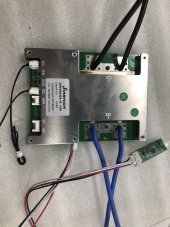Agreed on the use of a bus bar to bring the batteries together. I have two lugs on my Victron shunt and that works well. Four lugs? I'm not sure that would work.
I see only one fuse downstream of the batteries. In a do-as-say-not-as-I-do-comment, the general recommendation is to put a smaller fuse downstream of each battery and then one larger fuse downstream of the bus bar that brings the batteries together.
I have only two batteries and used a single 225 amp Class T fuse. My maximum possible draw at this point is only 98 amps, maybe 120 amps if went wild and turned EVERYTHING on at once.
A good number of two-battery implementations use a single fuse. Anything more than two batteries, you're starting to bleed into more rigorous requirements, in my opinion, and fusing each battery is a good idea. When I upgrade the inverter in my system (with the Victron 12/3000), that's likely when I'll fuse each battery.



